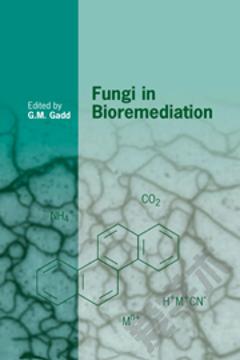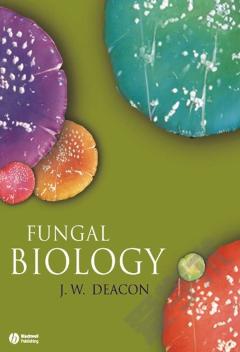Mycoremediation —— Fungal Bioremediation
Preface. 1. Introduction. 1.1 Fungal Biodegradation and Biodeterioration. 1.2 How a Fungus Escapes Water to Grow in Air? 1.3 Fungal Morphology, Analysis and Growth Measurement. 1.4 Mass Transfer, Growth Kinetics, and Bioreactors. 1.5 Methods for Detection of Degradative Fungi. 1.6 Fungi as Environmental Indicators. 1.7 Fungal Attack on Coal. 1.8 Thermophilic, Alpine, and Lichen-Forming Fungi. 1.9 Mycoremediation: Fungal Bioremediation. 1.10 Ecology of Mycoremediation. 1.11 Genetic Engineering of Mycoremediation References. 2. Fungal Treatment of Industrial Wastewaters. 2.1 Introduction. 2.2 Alternative Industrial Wastewater Bioreactors. 2.3 Fungal Treatment of Industrial Wastewaters. 2.4 Biotechnology. 2.5 Conclusions and Future Perspectives References. 3. Fungal Treatment of Distillery and Brewery Wastes. 3.1 Introduction. 3.2 Composition and Characteristics of Stillage. 3.3 Alternative Industrial Stillage Treatment Reactors. 3.4 Fungal Treatment of Distillery and Brewery Wastes. 3.5 Fungal Fermentation and Decolorization. 3.6 Molasses Toxicity to Fungi. 3.7 Factors Affecting Fungal Fermentation and Decolorization. 3.8 Mechanisms of Melanoidin Degradation. 3.9 Fungal Bioreactors for Distillery and Brewery Wastes. 3.10 Modeling. 3.11 Economic Importance. 3.12 Biotechnology. 3.13 Conclusions and Future Perspectives References. 4. Fungal Metabolism of Petroleum Hydrocarbons. 4.1 Introduction. 4.2 Fate of Oil in the Environment. 4.3 Composition of Petroleum Hydrocarbons. 4.4 Methods of Analysis of Petroleum Hydrocarbons. 4.5 Alternative Treatment Technologies. 4.6 Hydrocarbon-Utilizing Yeasts and Fungi. 4.7 Fungal Methods for Assessment. 4.8 Hydrocarbon Metabolism by Yeasts and Fungi. 4.9 Taxonomic Relationship of Hydrocarbon-Utilizing Yeasts and Fungi. 4.10 Factors Affecting Metabolism of Petroleum Hydrocarbons. 4.11 Fungal Mechanisms of Metabolism of Petroleum Hydrocarbons. 4.12 Oxidation of Petroleum Hydrocarbons by Fungal Enzymes. 4.13 Cytochrome P450 Enzyme Systems. 4.14 Economic Importance. 4.15 Biotechnology and Bioengineering. 4.16 Conclusions and Future Perspectives References. 5. Fungal Degradation of Polychlorinated Biphenyls and Dioxins. 5.1 Introduction. 5.2 Nomenclature. 5.3 Bioaccumulation and Toxicity. 5.4 Alternative PCB Remediation Technologies. 5.5 Analysis of Polychlorinated Biphenyls. 5.6 Bioavailability of Polychlorinated Biphenyls. 5.7 Fungal Degradation of Polychlorinated Biphenyls. 5.8 Fungal Degradation of Dioxins. 5.9 Genetic Manipulation. 5.10 Conclusions and Future Perspectives References. 6. Fungal Degradation of Pesticides. 6.1 Introduction. 6.2 Classification. 6.3 Biosensors for Detection of Pesticides. 6.4 Fungal Degradation of Insecticides. 6.5 Fungal Degradation of Herbicides. 6.6 Fungal Degradation of Fungicides. 6.7 Biotransformation of Pesticides by Fungal Enzymes. 6.8 Genetic Manipulation. 6.9 Conclusions and Future Perspectives References. 7. Fungal Metabolism of Phenols, Chlorophenols and Pentachlorophenol. 7.1 Introduction. 7.2 Alternative Treatment Technologies. 7.3 Fungal Biosensors for Determination of Various Types of Phenols. 7.4 Methods of Analysis of Various Types of Phenols. 7.5 Fungal Bioreactors for Removal of Various Types of Phenols. 7.6 Fungal Metabolism of Phenols, Chlorophenols and Pentachlorophenol. 7.7 Factors Affecting Fungal Metabolism of Various Types of Phenols. 7.8 Physiological Alterations of Fungi by Phenols. 7.9 Taxonomic Relationship of Phenol-Utilizing Yeasts and Fungi. 7.10 Mechanisms of Metabolism, Metabolic Pathways, and Metabolites. 7.11 Degradation of Phenols by Fungal Enzymes. 7.12 Fungal Transformation of Pentachlorophenol in Soils. 7.13 Cytochrome P450 Systems in Degradation of Phenols. 7.14 Conclusions and Future Perspectives References. 8. Fungal Metabolism of Polycyclic Aromatic Hydrocarbons. 8.1 Introduction. 8.2 Occurrence of PAHs in the Environment. 8.3 Alternative PAH Metabolism. 8.4 Fungal Metabolism of PAHs. 8.5 Mutagenicity of Fungal Metabolites of PAHs. 8.6 Fungal Bioreactors for Removal of PAHs. 8.7 PAH Degradation by Fungal Enzymes. 8.8 Cytochrome P450 in Degradation of PAHs. 8.9 Fungal Degradation of PAHs in Soils. 8.10 Fungal Metabolism of Complex PAH Mixtures. 8.11 PAH Degradation by Fungal-Bacterial Co-cultures. 8.12 Biotechnology and Bioengineering. 8.13 Conclusions and Future Perspectives References. 9. Fungal Lignin Degradation and Decolorization of Pulp and Paper Mill Effluents. 9.1 Introduction. 9.2 Distribution and Structure of Lignin. 9.3 Lignin-Degrading Microorganisms. 9.4 Fungal Lignin-Degrading Enzymes. 9.5 Mechanisms of Fungal Lignin Degradation and Metabolic Products. 9.6 Fungal Decolorization of Pulp and Paper Mill Effluents. 9.7 Fungal Bioreactors for Decolorization of Pulp and Paper Mill Effluents. 9.8 Factors Affecting Decolorization of Pulp and Paper Mill Effluents. 9.9 Effect of Fungal Treatment on Chlorophenols and Chloroaldehydes in Effluents. 9.10 Decolorization of Effluents by Fungal Enzymes. 9.11 Wetlands Treatment. 9.12 Conclusions and Future Perspectives References. 10. Fungal Decolorization and Degradation of Dyes. 10.1 Introduction. 10.2 Classification, Structure, and Color Measurements. 10.3 Legislation and Regulations. 10.4 Alternative Decolorization Treatment Technologies. 10.5 Fungal Decolorization and Degradation of Dyes. 10.6 Yeast Decolorization and Degradation of Dyes. 10.7 White-Rot Fungal Decolorization and Degradation of Dyes. 10.8 Mechanisms of Fungal Decolorization and Degradation of Dyes. 10.9 Metabolic Products and Pathways. 10.10 Factors Affecting Fungal Decolorization and Degradation of Dyes. 10.11 Fungal Dye Decolorization and Degradation Bioreactors. 10.12 Decolorization and Degradation of Dyes by Fungal enzymes. 10.13 Decolorization of Artificial Textile Effluent. 10.14 Sequential Dye Decolorization. 10.15 Conclusions and Future Perspectives References. 11. Fungal Biosorption of Heavy Metals. 11.1 Introduction. 11.2 Biosorption and Bioaccumulation of Heavy Metals. 11.3 Evaluation of Sorption Performance. 11.4 Mechanisms of Fungal Biosorption of Heavy Metals. 11.5 Fungal Biosorption Reactors for Heavy Metals. 11.6 Applications of Fungal Biosorption of Heavy Metals. 11.7 Fungal Biosorption of Herbicides and Phenols. 11.8 Fungal Biosorption of Dyes. 11.9 Fungal Binary and Ternary Biosorption Systems. 11.10 Biosorption of Heavy Metal Anions. 11.11 Metal Ion Resistance. 11.12 Conclusions and Future Perspectives References. 12. Mycorrhizal Fungi in Rhizosphere Remediation. 12.1 Introduction. 12.2 Classification of Mycorrhizal Fungi. 12.3 Functions of Mycorrhizal Mycelium. 12.4 Methods for Studying Mycorrhizal Fungi. 12.5 Molecular Mechanisms of Mycorrhizal Symbiosis. 12.6 Metabolism of Mycorrhizal Fungi. 12.7 Uptake of Toxic Metals. 12.8 Petroleum Hydrocarbon Degradation. 12.9 Lignin and Phenolic Degradation. 12.10 PAH and TNT Degradation. 12.11 PCB Degradation. 12.12 Herbicide Degradation. 12.13 Comparison of Mycorrhizal and White-Rot Fungi. 12.14 Conclusions and Future Perspectives References. Index.
{{comment.content}}








 京公网安备 11010802027623号
京公网安备 11010802027623号